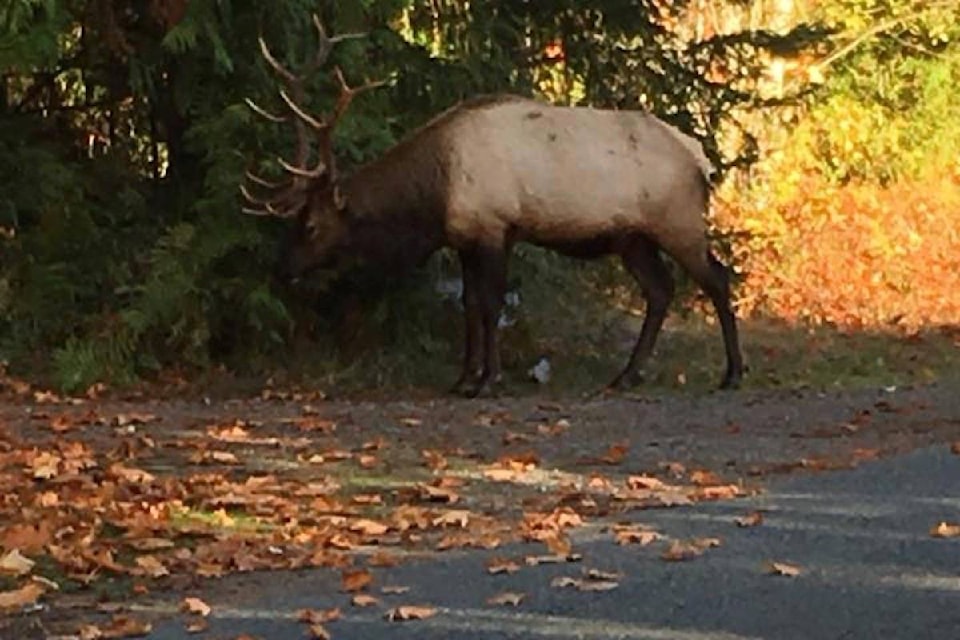The highway from Duncan to Lake Cowichan has become a dangerous place for both drivers and ungulates recently.
Wilderness Watch’s Denis Martel reports that between Dec. 1 and the end of January, 11 elk have been killed on Highway 18 after colliding with passing vehicles. He said the weather and driver speed are mainly to blame.
“The weather first of all, because it’s snowing up high. In a perfect world the elk would stay up high but there’d be lots of feed. Because the snow pushes them down it gets them down and they feed along the highways, which is the best place to find the wild grasses and the maple shoots and all those kinds of things they like to eat,” Martel said.
He explained that the way the highway has been constructed, while making sense, isn’t optimal when it comes to elk and vehicle intermingling.
“It’s built up high and the elk are in the ditches and they jump, they leap out onto the highway and it doesn’t give the drivers of the vehicles a chance to miss them and that’s why you get so many accidents — especially at night. You don’t see them until it’s too late.”
Martel also noted if drivers would slow down they’d give themselves a better chance at avoiding a nasty encounter.
“I know the speed limit is 100 kilometres but when you’ve got elk around and you try and stop when you’re doing 100km/hour it’s difficult to do.”
Crews have been cutting down alder trees along the highway which has improved visibility, if only a little.
“It’s giving about a 30-metre buffer between the highway and the edge of the forest on the high side. On the low side you’re still going to have that problem.”
Martel said the installation of reflectors in the Grand Forks area has cut the instance of elk-vehicle highway collisions by upwards of 80 per cent.
“They had reflectors on the side of the road and they were on rubber-type posts…and they were angled so that when the headlights hit them it would shine into the bush and it would stop the elk instantly,” he explained. “You know what they say, like a deer in headlights.”
Martel did note it wouldn’t be as easy as ordering up the special reflectors and installing them on the highway. A lot of red tape and consultation and approval would be required from multiple levels of government before such action would be taken. But still, he said, it’s food for thought.
Meanwhile, the area’s elk population is also taking a hit due to a recent rash of elk poaching.
Martel declined to comment on where specifically it’s occuring because that’s only led to problems in the past, but he said it is indeed happening.
His advice to citizens?
“Be aware that there’s poaching going on. If you see something that doesn’t look right, if you see an elk in the back of a vehicle for God’s sake get a licence number. That’s the first thing you do,” he said. “Don’t approach the vehicle, just get a licence plate and call the RCMP or the Conservation office’s hotline at 1-877-952-7277.”
Elk poaching is an annual issue in the Lake Cowichan area, despite many residents going so far as to name their favourite animals as they wander about. Even so, poachers take advantage of the massive animals coming closer to civilization to forage for food that isn’t burried under the mountain snow.
